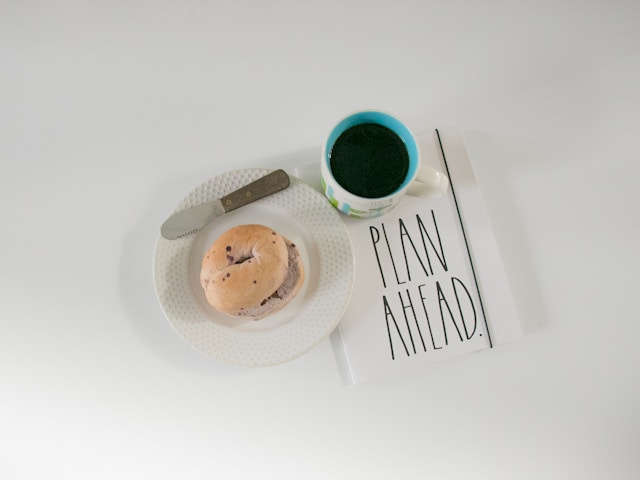Hasta las Estrellas

Cielo, el mundo está ahí, para compartirlo con quién quieras, si es tu deseo.
Obra tecnopoética. Marcador de pintura acrílica sobre papel negro. Pantalla LCD con animación aleatoria generada algorítmicamente. Dibujo y corte con plotter mecánico, pegado a mano; la precisión es maquínica, el error humano.
”Cielo, el mundo está ahí, para compartirlo con quién quieras, si es tu deseo.” This evocative phrase, meaning “Sunshine, the world is there to be shared with whomever you wish, if it’s your desire,” invites contemplation on the interconnectedness of humanity and the boundless possibilities of sharing our experiences.















El dibujo está realizado con marcadores Uni Posca de 3mm sobre papel Frabrianni negro texturado libre de ácido. La luna (de Valencia) es una secuencia de lineas superpuestas en 3 colores (blanco, gris y celeste), está insiprada en la obra de Eduardo Sempere, artista geométrico español.
La pantalla LCD es controlada por una Arduino Uno. La animación está generada algorítmicamente, para que cada escena sea distinta a la anterior y no se repita nunca (o las probabilidades sean sumamente bajas). Cada grupo está formado por 1 a 5 figuras geométricas, que pueden ser cuadrados, triángulos o círculos. El tamaño y la posición de estas figuras también es variable.

// Hasta las estrellas
// 2020, Colormono
// para Display Lcd 128x64 Grafico Spi St7920 Glcd
#include <Arduino.h>
#include <U8g2lib.h>
#ifdef U8X8_HAVE_HW_SPI
#include <SPI.h>
#endif
#ifdef U8X8_HAVE_HW_I2C
#include <Wire.h>
#endif
U8G2_ST7920_128X64_F_SW_SPI u8g2(U8G2_R0, 13, 11, 10, 8);
// Public
int lcdWidth = 128; // SCREEN WIDTH
int lcdHeight = 64; // SCREEN HEIGHT
int partyMin = 1; // MIN NUMBER OF SHAPES
int partyMax = 5; // MAX NUMBER OF SHAPES
int padding = 3; // SPACE BETWEEN SHAPES
int floorH = 49; // SKYLINE (0 is TOP LEFT)
int shineDuration = 1000; // LOOP DURATION (in milliseconds)
int timelapse = 30; // LOOPS ITERATIONS
int oscuridad = 5; // segundos, de oscuridad...
// Private, NOT PASS (I'm a comment, not a police)
int party = 1;
int partyWidth;
int timelapseCounter = 0;
int partySeats[] = { 1, 2, 3, 4, 5, 6, 7, 8, 9 };
int partyMembers[] = { 1, 2, 3, 4, 5, 6, 7, 8, 9 };
int memberShape[] = { 1, 2, 3, 4, 5, 6, 7, 8, 9 };
void u8g2_prepare(void) {
u8g2.setFont(u8g2_font_6x10_tf);
u8g2.setFontRefHeightExtendedText();
u8g2.setDrawColor(1);
u8g2.setFontPosTop();
u8g2.setFontDirection(0);
u8g2.setColorIndex(1);
}
void generate(void) {
// select party
party = random(partyMax) + partyMin;
Serial.print("Party of ");
Serial.println(party);
partyWidth = -padding;
for (int i = 0; i < party; i++) {
// child or grown
int memberSize;
if (random(100) > 50) {
// child
memberSize = random(9, 14);
} else {
// grown
memberSize = random(19, 22);
}
int g = floor(random(4));
memberShape[i] = g;
partyMembers[i] = memberSize;
partySeats[i] = partyWidth + padding;
partyWidth += memberSize + padding;
Serial.print("Hold a seat of ");
Serial.print(memberSize);
Serial.print(" pixels ");
Serial.println(partyWidth);
}
Serial.print("Total width ");
Serial.println(partyWidth);
}
void drawParty(void) {
// row position
int rowX = (lcdWidth - partyWidth) / 2;
Serial.print("Row should start at x ");
Serial.println(rowX);
// draw party
for (int i = 0; i < party; i++) {
int x = rowX + partySeats[i];
int y = floorH - partyMembers[i];
int d = partyMembers[i];
int g = memberShape[i];
switch (g) {
case 1: u8g2.drawTriangle(x, y + d, x + d / 2, y, x + d, y + d); break;
case 2: u8g2.drawBox(x, y, d, d); break;
default: u8g2.drawDisc(x + d / 2, y + d / 2, d / 2);
}
}
}
void drawGrass() {
u8g2.setColorIndex(1);
u8g2.drawBox(0, floorH + 1, lcdWidth, lcdHeight - floorH - 1);
u8g2.setColorIndex(0);
for (int g = 0; g < lcdWidth; g++) {
if (random(100) > 50) u8g2.drawPixel(g, floorH + 1);
if (random(100) > 50) u8g2.drawPixel(g, floorH + 3);
}
}
void drawStars() {
int starsBottom = 35;
int starsGrid = 6;
for (int x = 0; x < lcdWidth; x += starsGrid) {
for (int y = 0; y < starsBottom; y += starsGrid) {
if (random(100) > 83) {
if (y <= 20 ) {
if (random(100) > 83) {
drawStarA(x, y);
} else {
drawStarB(x, y);
}
}
if (y > 20 ) u8g2.drawPixel(x, y);
}
}
}
}
void drawStarA(int x, int y) {
u8g2.drawPixel(x, y);
u8g2.drawPixel(x + 2, y);
u8g2.drawPixel(x + 4, y);
u8g2.drawPixel(x + 2, y + 1);
u8g2.drawPixel(x, y + 2);
u8g2.drawPixel(x + 1, y + 2);
u8g2.drawPixel(x + 2, y + 2);
u8g2.drawPixel(x + 3, y + 2);
u8g2.drawPixel(x + 4, y + 2);
u8g2.drawPixel(x + 2, y + 3);
u8g2.drawPixel(x, y + 4);
u8g2.drawPixel(x + 2, y + 4);
u8g2.drawPixel(x + 4, y + 4);
}
void drawStarB(int x, int y) {
u8g2.drawPixel(x + 1, y);
u8g2.drawPixel(x, y + 1);
u8g2.drawPixel(x + 1, y + 1);
u8g2.drawPixel(x + 2, y + 1);
u8g2.drawPixel(x + 1, y + 2);
}
void drawStar(int x, int y, int s) {
u8g2.drawLine(x, y + s / 2, x + s, y + s / 2); // horizontal
u8g2.drawLine(x + s / 2, y, x + s / 2, y + s); // vertical
}
void setup(void) {
Serial.begin(9600);
u8g2.begin();
}
void loop(void) {
if (timelapseCounter == 0) {
generate();
}
u8g2.clearBuffer();
u8g2_prepare();
if (timelapseCounter < timelapse - oscuridad) {
drawParty();
}
drawStars();
drawGrass();
u8g2.sendBuffer();
timelapseCounter++;
if (timelapseCounter >= timelapse) {
timelapseCounter = 0;
}
delay(shineDuration);
Exhibitions
- 2023, FUA! Mercosur, Museo de la Cárcova
- 2022, Festival Fauna (1st Prize, Techno-poetics)
- 2021, Graduation Project


